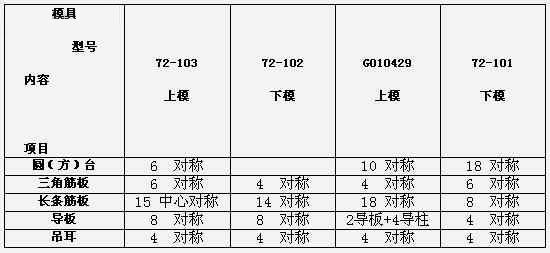Automotive Panel Mold Design for MFC Modeling (2)
4. Introducing Concurrent Engineering Ideas in Automotive Panel Die Design 4.1. Concurrent engineering concept Parallel engineering is a new product design and manufacturing model compared with the previous serial production technology. The US Defense Analysis Institute proposed the definition of concurrent engineering in December 1988: "Concurrent engineering is a system integration. Approach, which uses a parallel approach to product design and related processes, including manufacturing and support processes, which seeks to enable product developers to consider everything from concept design to product end-of-life throughout the product lifecycle from the start. Factors, including quality, cost, job scheduling, and user needs." [1] From this definition, it can be seen that parallel engineering requires product designers to consider the design philosophy of the entire life cycle of the product as much as possible in the initial stage of product design. 4.2. Introducing parallel engineering ideas In the traditional car cover mold design, it is often the design engineer who combines the needs of the manufacturer and exerts his own ingenuity to creatively design the mold. However, this "creative" often lacks consideration for subsequent processing, and therefore often leads to design modification. And rework, if you can take into account the habits and experience of MFC manufacturing engineers in the design process, then you can effectively avoid unnecessary rework, and because of the standardization of the mold part structure, the stylist can put more energy The design of the car profile, and this is the part that needs to be considered when designing. In order to improve the manufacturing efficiency of the automobile cover and reduce the manufacturing cycle, it is necessary to follow the idea of ​​concurrent engineering when designing the mold of the automobile cover, that is, to consider the needs of subsequent processing and future design, and the part of the design that involves product information. Try to think about digitization and standardization. In this way, once the 3D modeling of the mold is completed, all the standard components in the design process can be expressed in the form of statistical charts, which simplifies the work difficulty of the MFC stylist and can effectively save the viewing time and modeling work time. Based on these considerations, this paper analyzes the molds of several typical automotive cover parts. It can be seen that in addition to the complex profile of the cover, the other parts of the mold generally have great similarities, symmetry, and even Repeatability, such as ribs, guides, bosses, lifting lugs, etc., is a great possibility and necessity for digitizing and standardizing the features of the mold in the design. Table 4-1 Statistics on the structural characteristics of non-standard parts of several typical molds It can be seen from the statistics in Table 4-1 that if these non-standard structural parts are standardized, it will bring great convenience to the future design. We only need to call these parts in the design and then carry out the necessary parameters. Modification, and then positioning and installation can achieve the design of the mold structure (and these functions should be easier to implement in the popular 3D modeling software such as PRO/E, UG, Solidworks, etc., because they all have their own The standard parts library, we only need to expand the necessary extensions). The figures of these statistics are all from the FMC workshop of Shanghai Liaoyuan Automobile Mould Factory. If we use the MFC workshop model as the main basis in the design of the mold cover, then this not only brings convenience to the mold design, but also in the mold. Once the design is complete, information about the use of the above standard components in the design can be obtained immediately. For example, the design uses several bosses, several cylinders, etc., as well as their respective feature sizes, so that data information can be tabulated, and information can be shared directly with the MFC workshop in the database. The MFC workshop can Immediately based on these data information, the parts needed for the model can be produced without the need to analyze the drawings in the past, which not only reduces the workload and work difficulty of the MFC workshop, but also further reduces the manufacturing cycle of the automobile cover parts and also reduces the MFC material. The consumption and waste of (polystyrene plastic) has achieved the goal of saving energy, reducing pollution and environmental protection, and also reflects the manufacturing idea of ​​concurrent engineering. 5. in conclusion The idea of ​​concurrent engineering is the idea of ​​advanced manufacturing technology. Whether it can effectively use advanced manufacturing technology to serve enterprises in the development of manufacturing industry will determine the fate of the future development of this enterprise. As one of the key points of modern manufacturing, automobile manufacturing is also an important research field. This paper explores the idea of ​​introducing parallel engineering in the design process of automotive panels, opening up a new way for the design of automotive panels, and grasping the two most time-consuming work steps in the design (CAD/CAM of the mold) Modeling and MFC design), how to make more efficient use of concurrent engineering Previous page 